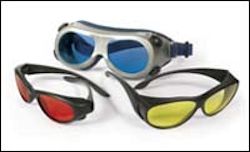Safety Issues
Possible Solutions
The American National Standard Institute (ANSI) Z136 series of laser safety standards covers lasers in medical settings and provides guidance for the safe use of lasers in healthcare facilities.

These guidelines are considered to be the standard for safe practice in the industry and include solutions such as:
- Use laser protective eyewear that provides adequate protection against the specific laser wavelengths being used. All laser eyewear must be marked with Optical Density (OD) and laser wavelength.
- Display warning signs conspicuously on all doors entering the Laser Treatment Controlled Area (LTCA) to warn those entering the area of laser use. Warning signs should be covered or removed when the laser is not in use.
- Facility-authorized technicians who are trained in laser service must perform maintenance on lasers and laser systems.
- Provide local exhaust ventilation with a smoke evacuator or a suction system with an in-line filter to reduce laser-generated airborne contaminants (LGAC) levels in laser applications.
- Use an appropriate filter or barrier which reduces any transmitted laser radiation to levels below the applicable Maximum Permissible Exposure (MPE) level, for all facility windows (exterior or interior) or entryways located within the Nominal Hazard Zone (NHZ) of a Class 3B and Class 4 laser system.
- Use skin protection if repeated exposures are anticipated at exposure levels at or near the applicable MPE limits for the skin.
Knowledge Check Choose the best answer for the question.
3-6. What should be used to provide protection against the specific laser wavelengths being used?
You forgot to answer the question!
